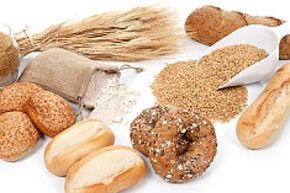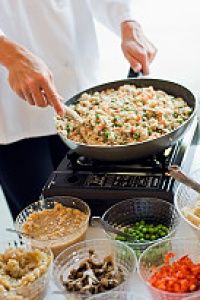Could you give up pasta, pizza and cookies? For most of us, that'd be tough. But what if they made you sick? For an estimated 2 million Americans with celiac disease -- that's about one out of 133 people -- foods that contain gluten, a protein that is naturally found in wheat, rye and barley, are off the table. [source: National Digestive Diseases Information Clearinghouse (NDDIC)] Literally.
Celiac disease is a genetic autoimmune digestive disorder that causes inflammation throughout the body but specifically damages the small intestine when a person eats foods that contain gluten. Nutrients then can't be absorbed through the intestine into the bloodstream.
Advertisement
For most people, eating gluten is no big deal. In fact, without it in our diet we might find ourselves tired, have headaches, gain weight, and experience vitamin and nutrient deficiencies. But for people with gluten sensitivity, even the smallest bite of a slice of wheat bread could cause chronic diarrhea and abdominal bloating, iron-deficiency anemia, osteoporosis, infertility, depression, mouth sores, rashes and even seizures [source: NDDIC].
Celiac disease isn't the only reason someone may need to avoid gluten. Some people are sensitive to gluten without having the full-blown condition. In addition to the 1 percent of Americans with celiac disease, an estimated 15 percent of Americans may have an undiagnosed sensitivity to gluten [source: Voiland]. This population has high levels of gluten antibodies in their system, just like people with celiac disease, but unlike those with the disease, their level of gluten sensitivity has not yet caused intestinal inflammation.
There is no cure for celiac disease or gluten sensitivity. The only treatment is to eliminate gluten from the diet. Whether it's a friend or family member with celiac disease or gluten sensitivity -- or a friend who has decided to join Gwyneth Paltrow and other celebs and follow today's gluten-free diet trend -- chances are increasing that you know someone who is living gluten free, or "GF."
You can easily accommodate a GF diet as long as you plan ahead, preparing pasta, pizza and desserts that include cookies in modified forms. In fact, it's easy to serve elegant, tasty foods to your friends and family. You may already be adjusting your menus for those who have lactose intolerance or food allergies or who follow a vegetarian or vegan diet. Uncomplicated substitutions, avoiding certain ingredients and careful label reading will help you put together a menu that will wow everyone, whether or not they avoid gluten. Let's start with ideas on how to put together a GF-friendly menu for your next dinner party.
Advertisement

